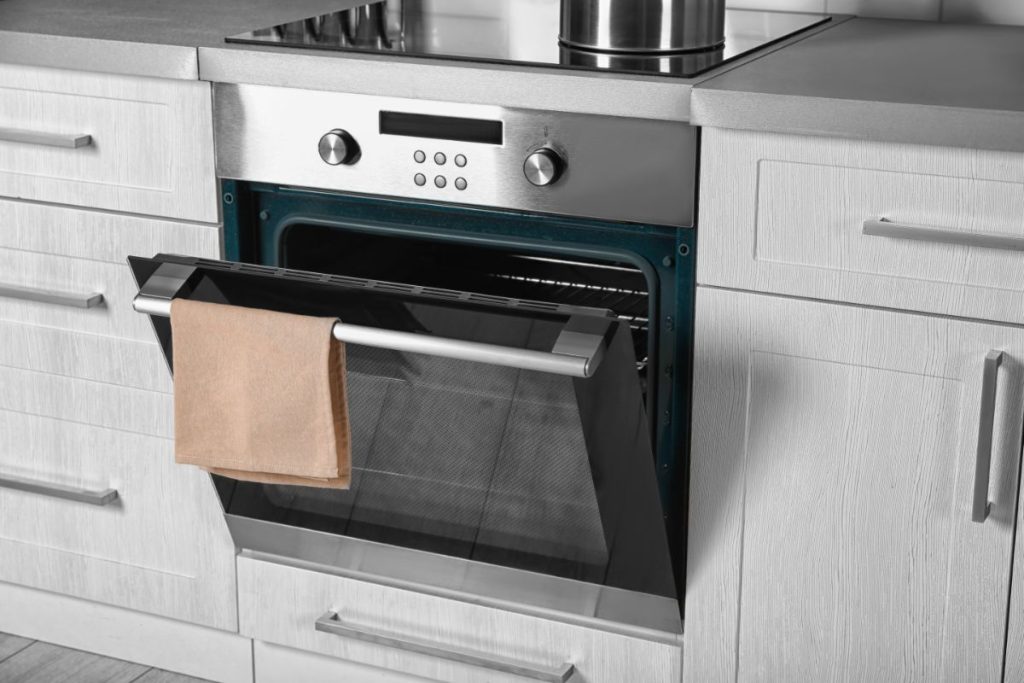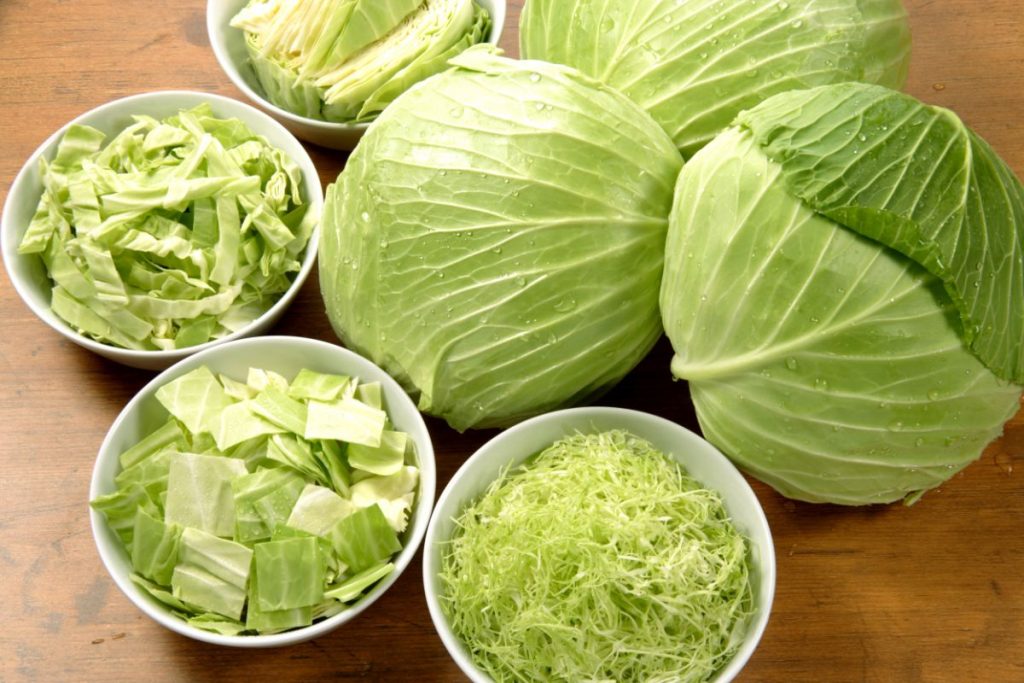The best way to dehydrate cabbage and coleslaw is to use a food dehydrator. Cut washed cabbage heads into strips or shreds and dry them for 7-12 hours at 135°F until crunchy. Dry coleslaw at 115°F-120°F for at least 12 hours until crispy.
Table of Contents
What is the Best Way to Dehydrate Cabbage?
The best way to dehydrate cabbage is in a food dehydrator because it’s less likely to burn your veggies.
Here’s how to dehydrate cabbage in an electric dehydrator:
- Remove the outer leaves from each head of the cabbage.
- Cut the heads into quarters and remove the stems and core.
- Rinse the pieces under cool running water.
- Shred the cabbages or cut them into thin strips measuring 1/8 to 1/4 inches wide.
- Blanch the shredded cabbage by dipping it in boiling water for two minutes and then shock in an ice bath for a few minutes.
- Take the blanched cabbage out of the ice bath and pat the pieces dry with paper towels.
- Place the strips or shreds on dehydrator trays in single layers, taking care to ensure the pieces have space for air circulation.
- Dry them at 130°F for 7-12 hours until crispy and brittle.
- Check on the cabbage every 3-4 hours and more often toward the end of the drying process to avoid scorching.
- Take out a small amount once they appear dry and allow them to cool to room temperature. Test for dryness. If the cabbage leaves still have moisture, continue dehydrating them.
- Condition fully dried veggies for a week in airtight containers. Watch for pieces sticking together or condensation forming on the container, as these are signs of moisture.
- Store your dried green or red cabbage in airtight containers at room temperature in a cool, dry place.

What is the Best Method for Dehydrating Coleslaw?
The best method for dehydrating coleslaw is using a food dehydrator. Coleslaw can be watery, especially if you don’t salt the cabbages when making it.
Drying it in a dehydrator at a lower temperature reduces the risk of scorching because ovens operate at a higher temperature than dehydrators.
How Do You Dehydrate Cabbage in the Oven?
You can use an oven to dehydrate cabbage if you don’t have an electric dehydrator:
- Prepare the fresh cabbages by removing the outer leaves, cutting the heads into quarters, and removing the cores and stems.
- Wash the quarters under cool running water.
- Shred the cabbages or cut them into strips as wide as 1/8 or 1/4 inches.
- Blanch the pieces in boiling water for two minutes and then cool them in ice water for a few minutes.
- Drain the water and pat the cabbage with paper towels to remove any extra water.
- Load the cabbage onto a baking sheet and place it in the oven. If you have a conventional oven, open the oven door a few inches to promote airflow.
- Dehydrate the cabbage at 200°F or the lowest temperature setting for 2-4 hours until crispy and brittle.
- Check the progress of the cabbage frequently to avoid scorching it.
- Take out a few pieces and allow them to cool to room temperature. Test to see that they are brittle and crispy. Continue dehydrating if the veggies are not fully dry.
- Condition the fully dehydrated red or green cabbages for a week and store them in airtight containers in a cool, dry, dark place.

Do You Have to Blanch Cabbage Before Dehydrating It?
You don’t have to blanch cabbage before dehydrating it. Since you can eat it raw, blanching is not necessary. However, it’s an important step to consider if you want to preserve the cabbage’s color, texture, and flavor. Blanching also relaxes cabbage tissues to reduce drying time.
To blanch shredded cabbage, drop it in boiling water for two minutes, then remove it and dip it in an ice bath for a few minutes to end the cooking process.
How Long Does It Take to Dehydrate Cabbage?
It takes 2-4 hours to dehydrate cabbage in an oven at 200°F and 7-12 hours in a food dehydrator at 130°F. The drying time depends on the size, shape, and thickness of the pieces.

Is Dehydrated Cabbage Safe to Eat?
Dehydrated cabbage is safe to eat, provided it was properly dehydrated and stored. Avoid eating any cabbage that has visible mold or an off-putting smell.
How Do You Rehydrate Dehydrated Cabbage?
The best way to rehydrate dehydrated cabbage is to boil it in water for 15-20 minutes until soft. One cup of water is enough to rehydrate 1/4 cup of dry cabbage. This method will cook the cabbage.
If you wish to use rehydrated cabbage for raw applications like sauerkraut and coleslaw, soak it in cold water for several hours until soft, then drain it.
Conditioning Dehydrated Cabbage
Dehydrated cabbage requires conditioning before long-term storage.
To condition fully dried cabbage, keep it in clear airtight containers for seven days. Shake the containers once daily and check to ensure the cabbage doesn’t stick together and to ensure no condensation forms inside the container.
Storing Dehydrated Cabbage
Store the dried cabbage in sealed food storage containers like glass jars, vacuum seal bags, Mason jars, or Mylar bags at room temperature in a cool, dry, dark place. Properly stored dry cabbage has a shelf life of 1-2 years.

